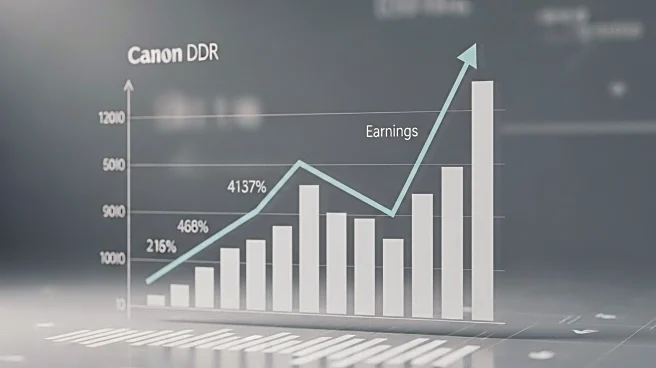What's Happening?
Homeowners seeking additional financing through a Home Equity Line of Credit (HELOC) are experiencing lower monthly payments due to recent interest rate cuts by the Federal Reserve. A $75,000 HELOC now costs between $712 and $906 per month, depending on the term length, with rates currently at 7.89%. This marks a decrease from earlier in 2025 and significantly lower costs compared to the summer of 2024 when rates were higher. The variable nature of HELOCs allows borrowers to benefit from future rate reductions without needing to refinance, making it an attractive option for those needing substantial funding.
Why It's Important?
The reduction in HELOC costs is significant for homeowners looking to leverage their home equity for financial needs. As interest rates decline, borrowing becomes more affordable, potentially stimulating consumer spending and investment. This trend could positively impact the housing market by encouraging more homeowners to utilize their equity, thereby increasing liquidity. Additionally, the Federal Reserve's actions to lower rates may signal broader economic strategies aimed at fostering growth and stability, which could have ripple effects across various sectors.
What's Next?
The Federal Reserve is expected to continue its rate-cutting strategy in upcoming meetings, which could further decrease HELOC costs. Homeowners and financial institutions will likely monitor these developments closely, as additional rate cuts could enhance borrowing affordability. This may lead to increased demand for HELOCs and other credit products, influencing lending practices and financial planning strategies. Stakeholders, including policymakers and economic analysts, will be assessing the long-term implications of these rate adjustments on the broader economy.
Beyond the Headlines
The trend of declining interest rates raises questions about the long-term sustainability of such economic policies. While beneficial for borrowers, prolonged low rates could impact savings returns and financial institution margins. Additionally, the ease of accessing home equity might lead to increased consumer debt levels, necessitating careful financial management. The cultural shift towards leveraging home equity for financial flexibility reflects changing attitudes towards debt and asset utilization.










